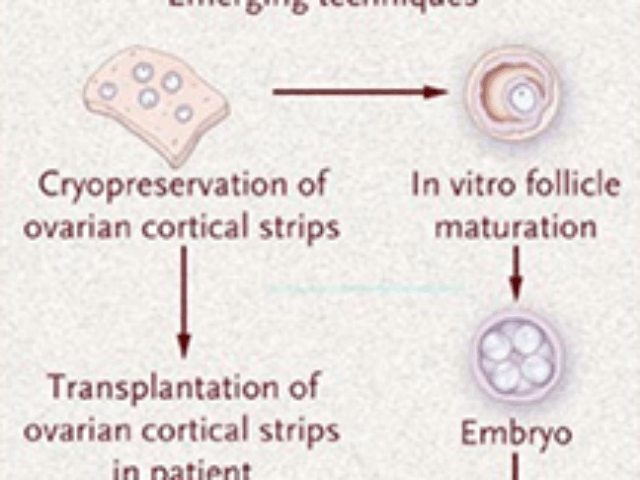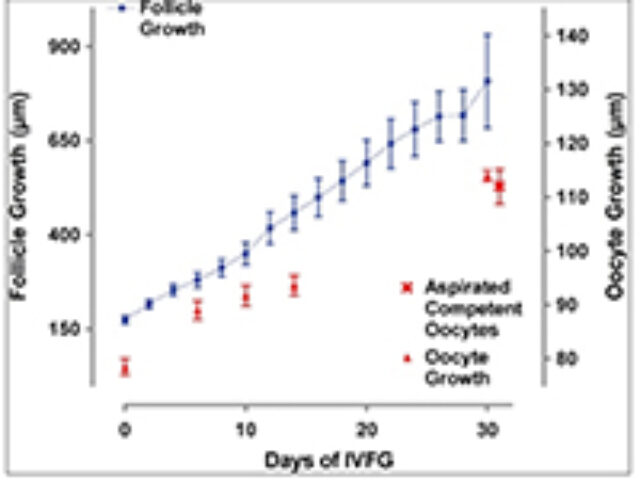Patient Translation
The Woodruff Lab applies the knowledge of follicle development and markers of egg quality to improve the quality of life for young women with diseases, such as cancer. Cancer treatments including chemotherapy, radiation, or surgery may impair the later reproductive ability of survivors. We aim to prevent this damage by developing new in vitro methods to foster follicle development.
In vitro follicle growth
A major goal in the lab is to develop methods to grow mouse preantral ovarian follicles in vitro to terminal stages of maturity. The team has chosen to use encapsulation methods in which biomaterials, such as alginate, fully surround the follicle. These encapsulated systems are unique, because follicle architecture, or the geometric relationship of the oocyte and its companion granulosa cells, is effectively maintained. With this system, key events of oogenesis and folliculogenesis are recapitulated including: follicle growth and differentiation, hormone production, ovulation mechanics and formation of meiotically and developmentally competent gametes capable of giving rise to live offspring. Importantly, this “artificial ovary” system is the only one in which the lab has been able to sustain follicle growth and development of follilces from large mammalian species, including canine, bovine, nonhuman primates, and humans.



